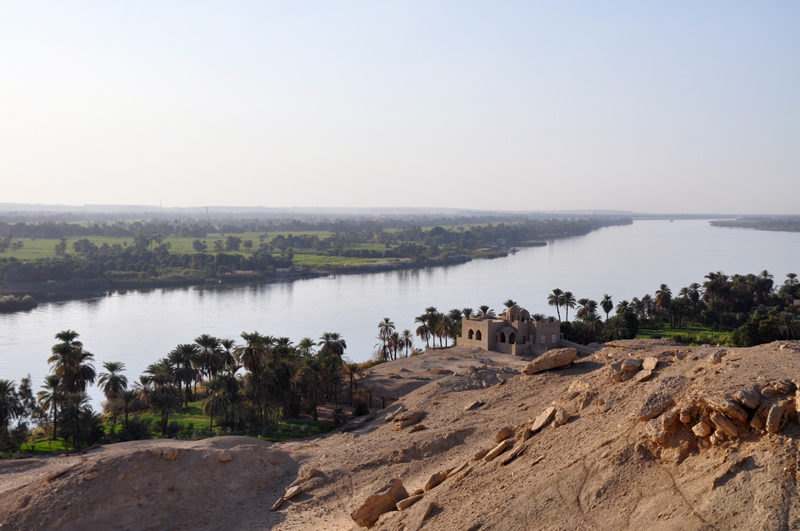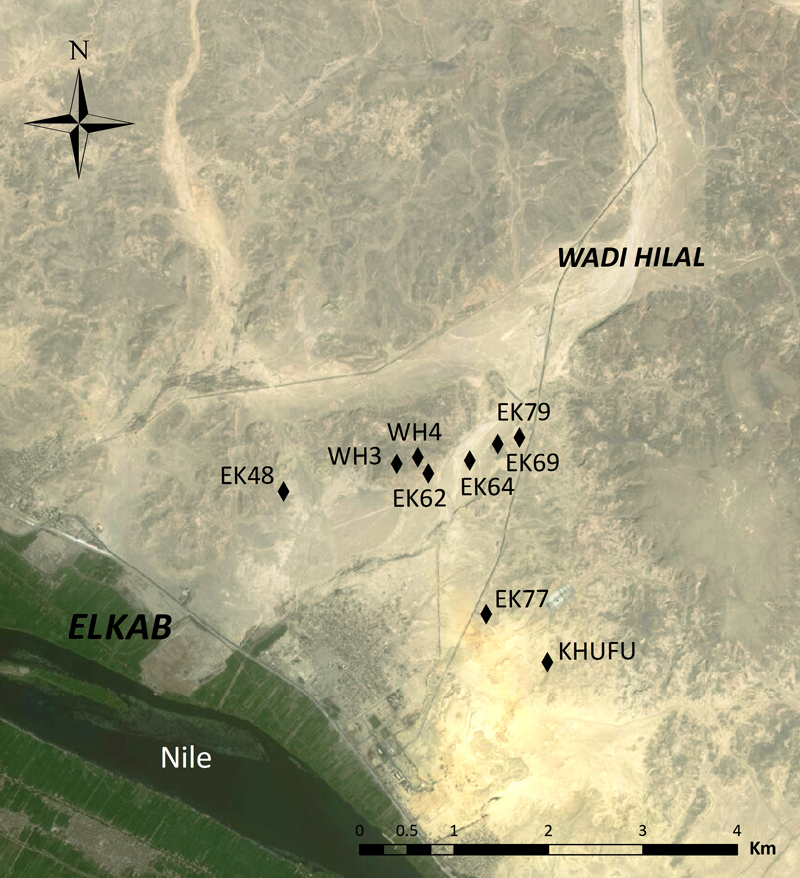Elkab Desert Survey Project (EDSP)
Inscriptions in the Wadi Hilal, along with the surviving remains of Eighteenth Dynasty, Ramesside, and Graeco-Roman temples, have provided indications of a cycle of festivals linking Elkab with the Eastern Desert.

The proper recording of the relevant inscriptions and depictions in the Wadi Hilal, along with archaeological surveys of the Wadi Hilal and its hinterlands, should lead to a better understanding of the cults of early Elkab, and perhaps the location of pre-New Kingdom cult sites in the Wadi Hilal (Figure 1). During the 2014–2015 field season the Elkab Desert Survey Project focused on four major areas:
1) the Borg el-Hamam rock inscription and rock art site in the southwestern portion of the Wadi Hilal, with the nearby Khufu site; 2) the area of rock inscriptions and archaeological remains in the eastern portion of the mouth of the Wadi Hilal, bounded by “Vulture Rock” to the west and the small Amenhotep III temple to the east; 3) areas of unrecorded rock art and inscriptions in the vicinity of the hemispeos of Smithis; 4) the Late Roman site of el-Garayat farther to the east in the Wadi Hilal.

